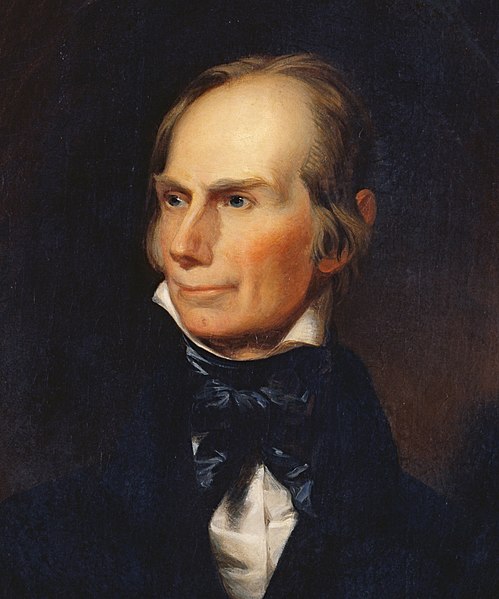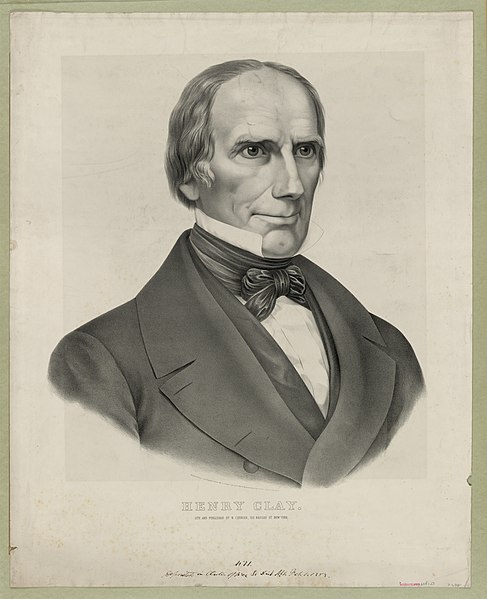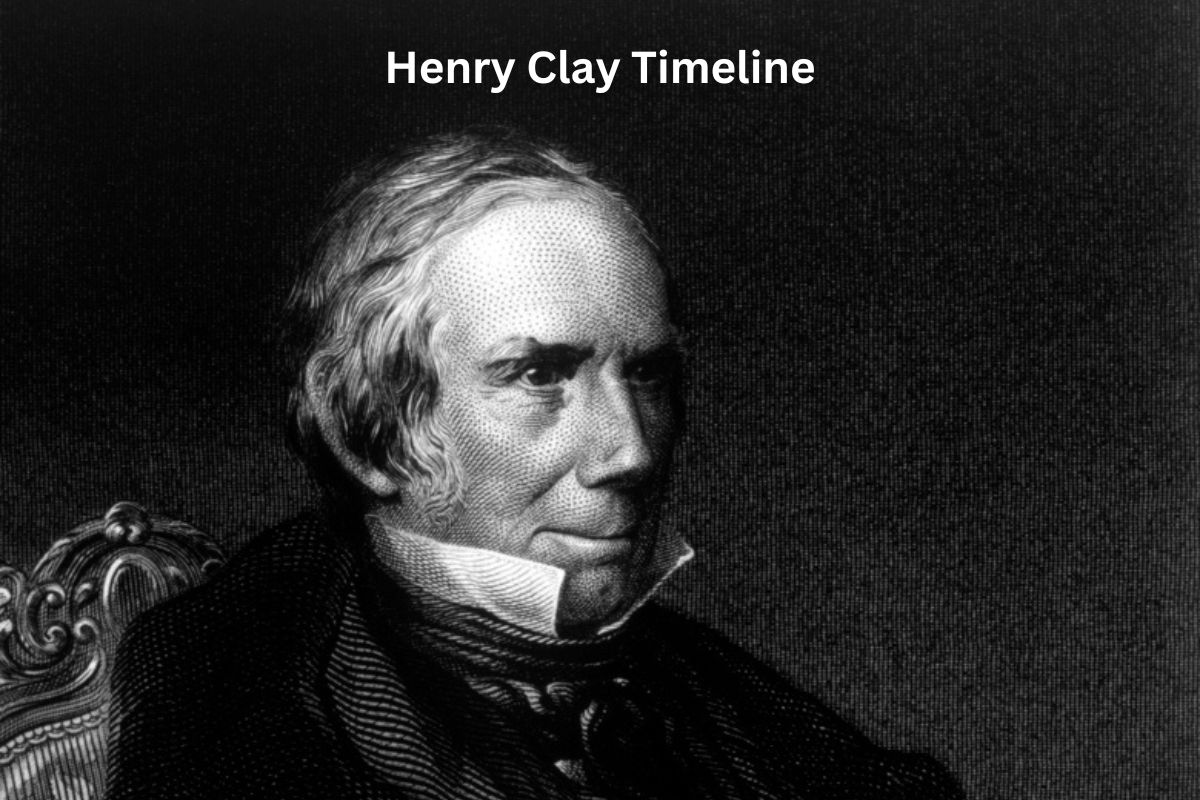Henry Clay (1777-1852) was a towering figure in American politics during the 19th century. Born in Virginia and later settling in Kentucky, Clay’s journey from humble beginnings to national prominence was marked by his roles as a lawyer, statesman, and skilled diplomat.
He played a crucial part in numerous significant events, including negotiating the Treaty of Ghent to end the War of 1812, crafting the Missouri Compromise, and shaping the Compromise of 1850.
Clay’s political career was defined by his commitment to preserving the Union, earning him the moniker “The Great Compromiser.” This introduction sets the stage for a deeper exploration of his remarkable life and contributions to American history.
| Year | Event |
|---|---|
| 1777 | Henry Clay is born in Hanover County, Virginia. |
| 1797 | Clay moves to Lexington, Kentucky, and begins his legal career as a lawyer. |
| 1803 | Henry Clay is elected to the Kentucky State Legislature. |
| 1806 | Clay serves as a U.S. Senator for a brief period but resigns to become Kentucky’s Secretary of State. |
| 1811 | Clay returns to the U.S. Senate, serving until 1814. |
| 1814 | During the War of 1812, Henry Clay is appointed as one of the commissioners to negotiate the Treaty of Ghent, which ends the war. |
| 1820 | Clay plays a pivotal role in the Missouri Compromise, helping to preserve the balance between free and slave states in the Union. |
| 1825 | Henry Clay runs for the presidency but loses to John Quincy Adams in the controversial election of 1824. |
| 1829-1831 | Clay serves as the U.S. Secretary of State under President John Quincy Adams. |
| 1831-1842 | Clay returns to the U.S. Senate for a second time, representing Kentucky. |
| 1832 | Henry Clay runs for the presidency as the candidate of the National Republican Party but is defeated by Andrew Jackson. |
| 1833 | Clay proposes the Compromise Tariff, which helps to resolve the Nullification Crisis in South Carolina. |
| 1839 | Clay becomes the leader of the Whig Party, a political party formed to oppose the policies of President Martin Van Buren. |
| 1844 | Clay is the Whig Party’s presidential nominee but loses to James K. Polk in the election. |
| 1850 | Henry Clay plays a crucial role in the Compromise of 1850, a series of legislative measures aimed at addressing sectional tensions over slavery. |
| 1852 | June 29: Henry Clay dies in Washington, D.C. |
Timeline of Henry Clay
1777: Henry Clay is born in Hanover County, Virginia
Henry Clay was born on April 12, 1777, in a modest household in Virginia. His family struggled financially, and his father died when he was just four years old, leaving his mother to raise him and his siblings.

1797: Clay moves to Lexington, Kentucky, and begins his legal career as a lawyer
In pursuit of better opportunities, Henry Clay moved to Lexington, Kentucky, in 1797. There, he worked as a shop assistant before starting his legal apprenticeship.
Also Read: Facts About Henry Clay
He studied law under prominent attorney George Wythe and quickly built a successful legal practice, becoming known for his eloquence in the courtroom.
1803: Henry Clay is elected to the Kentucky State Legislature
Clay’s involvement in politics began when he was elected to the Kentucky State Legislature in 1803.
His early political career focused on issues such as infrastructure development and education, reflecting his belief in the importance of internal improvements and public education for a growing nation.
1806: Clay serves as a U.S. Senator for a brief period but resigns to become Kentucky’s Secretary of State
In 1806, Henry Clay was elected as a U.S. Senator from Kentucky but served for only a short time before resigning to accept an appointment as Kentucky’s Secretary of State. During his tenure in this role, he played a role in shaping the state’s foreign policy.
1811: Clay returns to the U.S. Senate, serving until 1814
Henry Clay’s return to the U.S. Senate in 1811 marked the beginning of his long and influential career in national politics.
Also Read: Accomplishments of Henry Clay
During this period, he was a vocal advocate for American neutrality during the Napoleonic Wars and played a key role in crafting the Treaty of Ghent, which ended the War of 1812 between the United States and Great Britain.

1814: During the War of 1812, Henry Clay is appointed as one of the commissioners to negotiate the Treaty of Ghent, which ends the war
In 1814, during the War of 1812, Henry Clay was appointed as one of the commissioners to negotiate the Treaty of Ghent. This treaty, signed on December 24, 1814, effectively ended the war between the United States and Great Britain.
Clay’s involvement in these negotiations marked his early reputation as a skilled diplomat and statesman.
1820: Clay plays a pivotal role in the Missouri Compromise, helping to preserve the balance between free and slave states in the Union
In 1820, Henry Clay played a pivotal role in the passage of the Missouri Compromise. This compromise admitted Missouri as a slave state and Maine as a free state, maintaining a balance of power between slave and free states in the Union.
Additionally, it established a line (the 36°30′ parallel) below which slavery would be prohibited in the Louisiana Territory. Clay’s efforts to broker this compromise earned him the nickname “The Great Compromiser.”
1825: Henry Clay runs for the presidency but loses to John Quincy Adams in the controversial election of 1824
In 1824, Henry Clay ran for the presidency as a candidate of the Democratic-Republican Party but was defeated by John Quincy Adams in a highly contentious and controversial election.
Clay’s support in the House of Representatives played a crucial role in securing Adams’s victory, but many of Clay’s opponents accused him of making a “corrupt bargain” with Adams.
1829-1831: Clay serves as the U.S. Secretary of State under President John Quincy Adams
After John Quincy Adams’s election as President, he appointed Henry Clay as his Secretary of State in 1825.
Serving as the nation’s top diplomat, Clay played a key role in negotiating important international agreements, including the Treaty of 1826 with Great Britain, which helped settle disputes related to the Canada-U.S. border.

1831-1842: Clay returns to the U.S. Senate for a second time, representing Kentucky
After his tenure as Secretary of State, Henry Clay returned to the U.S. Senate in 1831. During his second stint in the Senate, he continued to be a prominent political figure and played a central role in addressing key issues of the time, including the Nullification Crisis and the struggle over the Bank of the United States.
1832: Henry Clay runs for the presidency as the candidate of the National Republican Party but is defeated by Andrew Jackson
In 1832, Henry Clay ran for the presidency as the candidate of the National Republican Party, which later became the Whig Party.
He faced incumbent President Andrew Jackson, a formidable opponent. Despite his campaign focusing on economic issues, opposition to Jackson’s policies, and his own national reputation, Clay was ultimately defeated by Jackson in the election.
1833: Clay proposes the Compromise Tariff, which helps to resolve the Nullification Crisis in South Carolina
The Nullification Crisis of 1832-1833 saw South Carolina declaring that they had the right to nullify, or reject, federal tariffs they deemed unfair.
Henry Clay played a critical role in resolving this crisis by proposing a compromise tariff, known as the Compromise Tariff of 1833. This tariff gradually reduced duties over a period of several years, defusing tensions and averting a potential secession crisis.
1839: Clay becomes the leader of the Whig Party, a political party formed to oppose the policies of President Martin Van Buren
The Whig Party emerged in opposition to President Martin Van Buren’s administration. Henry Clay, with his strong nationalistic and economic policies, became a leading figure within the party.
Under his leadership, the Whigs coalesced around a platform that included support for a national bank and government-funded internal improvements.
1844: Clay is the Whig Party’s presidential nominee but loses to James K. Polk in the election
In 1844, the Whig Party nominated Henry Clay as their presidential candidate. The election was closely contested, with Clay advocating for economic policies and westward expansion. However, he was narrowly defeated by the Democratic candidate, James K. Polk.
The election marked a turning point in American expansionism, as Polk’s victory led to the annexation of Texas and the Mexican-American War.
1850: Henry Clay plays a crucial role in the Compromise of 1850, a series of legislative measures aimed at addressing sectional tensions over slavery
In 1850, the United States faced heightened tensions over the issue of slavery, particularly regarding the territories acquired from the Mexican-American War. Henry Clay, in his last major political act, played a central role in crafting the Compromise of 1850.
This compromise package included measures like the admission of California as a free state, the strengthening of the Fugitive Slave Act, and the organization of the Utah and New Mexico Territories without specific provisions on slavery.
Clay’s efforts were aimed at preserving the Union, but the compromise only provided a temporary respite from the growing conflict.
1852: June 29: Henry Clay dies in Washington, D.C
On June 29, 1852, Henry Clay passed away in Washington, D.C., marking the end of an era in American politics. His death was met with widespread mourning and recognition of his immense contributions to the nation.
Clay’s legacy as a statesman, compromiser, and advocate for national unity continued to influence American politics and policy long after his passing.
